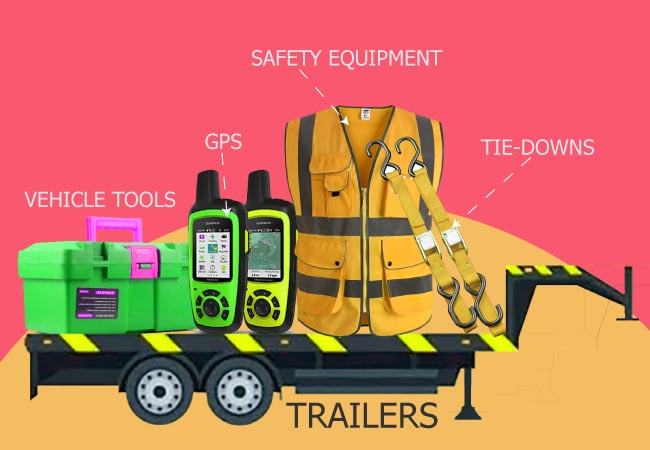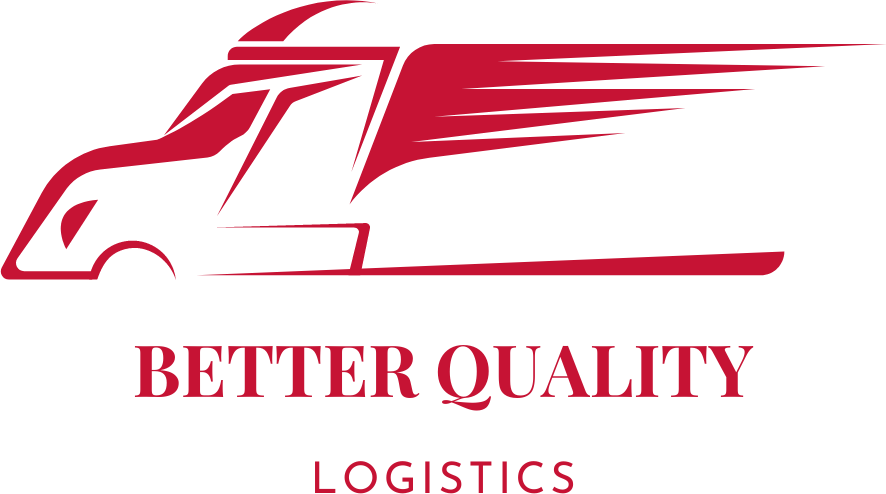Hotshot trucking is a specialized form of transportation that requires specific equipment to ensure the efficient and safe delivery of goods.
This article outlines the essential equipment needed for hotshot trucking, including trucks, trailers, tie-downs, GPS and communication devices, safety equipment, vehicle maintenance tools, and proper licensing and insurance.
Learn how to equip yourself for success in the hotshot trucking industry.
Table of Contents
What are the equipment needed for hotshot trucking?
To become a hotshotter, there are some essential equipment and hot shot starter kits that you’ll need to get started. Here are a few of the most important ones:

Choosing the right truck
A reliable and well-maintained truck is essential for hotshot trucking. Generally, a one-ton or three-quarter-ton pickup truck that is equipped with a gooseneck or fifth-wheel hitch, or larger with a flatbed or gooseneck trailer is preferred for this type of transportation.
Medium-Duty Truck: A medium-duty truck with a minimum weight rating of 10,001 pounds is essential for hot shotting. This type of truck is smaller and more maneuverable than a traditional tractor-trailer but still has the power and payload capacity to transport smaller loads.
Trailer: You’ll need a trailer to haul your cargo. The most common type of trailer used for hot shotting is a flatbed trailer, which provides flexibility for carrying a variety of loads. You may also need additional equipment, such as straps, chains, and tarps, to secure your cargo during transport.
Types of trailers for hotshot trucking
A flatbed or gooseneck trailer is typically used for hotshot cargo shipment, as they allow for easy loading and unloading of freight. It’s important to choose a hotshot trailer that can accommodate the size and weight of the cargo being transported.
What size trailer is best for hotshot trucking?
The most common trailer sizes for hotshot trucking are 20-foot and 40-foot trailers, although some drivers may use 30-foot or 45-foot trailers depending on the specific needs of their business.
Ultimately, the size of the trailer should be chosen based on the size and weight of the cargo being transported, as well as any weight or size restrictions imposed by state or federal regulations.
The size of the trailer that is best for hotshot trucking will depend on several factors, and they are:
- type of cargo being transported
- the weight and dimensions of the cargo
- requirements of the shipper and receiver
Generally, hotshot trucking refers to the transportation of smaller, time-sensitive loads that are too small to require a full-size tractor-trailer.
As such, hotshot trucks are typically equipped with smaller trailers, such as flatbeds or lowboys, that can accommodate loads of up to 10,000 pounds.
Tie-downs:
Straps, chains, and other tie-downs are necessary to secure the cargo being transported to the trailer. It’s important to use high-quality, heavy-duty tie-downs to ensure that the freight remains in place during transport.
Types of tie-downs
There are several types of tie-downs that can be used for hotshot trucking businesses in the USA, depending on the type of cargo being transported and the regulations in the specific area in which the business operates.
Here are some common types of tie-downs:
- Chains: Chains are heavy-duty and can be used to secure heavy equipment or machinery. The chains should have hooks on both ends for attaching to the truck and trailer, and they should be properly tensioned and secured to prevent any movement.
- Straps: Straps are made of sturdy materials such as nylon or polyester and can be used to secure a variety of cargo, including boxes, pallets, and machinery. Ratchet straps are commonly used and have a mechanism that allows for easy tightening and release.
- Binders: Binders are used to secure loads that require a lot of force to keep in place, such as steel coils or heavy machinery. They work by tightening a chain or strap until the load is secured in place.
- Tarps: Tarps can be used to protect the cargo from the elements and keep it secure on the trailer. They should be properly tied down and secured to prevent any movement or wind from getting underneath.
- Rope: Rope can be used for lighter loads or securing items that may not fit properly with other tie-downs. However, it’s important to ensure the rope is strong enough to support the weight of the cargo.
When using tie-downs, it’s important to follow the specific regulations for the type of cargo being transported and the area in which the business operates. Properly securing the cargo can help prevent accidents, damage to the cargo or trailer, and ensure compliance with DOT regulations.
GPS and communication devices:
GPS devices can help drivers navigate to their destination and avoid traffic or other hazards on the road. Communication devices such as cell phones or two-way radios can help drivers stay in touch with dispatch and other drivers.
Communication equipment such as a two-way radio or a cell phone to stay in touch with the shipper and receiver, as well as to call for assistance in case of an emergency.
Here are two important things to consider:
- Navigating to the destination
- Staying in touch with dispatch and other drivers
Safety equipment compliance
Safety equipment such as hard hats, reflective vests, and safety glasses to ensure the safety of the driver and any others involved in the transportation process.
It’s important to have safety equipment such as fire extinguishers, first aid kits, and reflective warning triangles on board in case of emergencies.
Essential safety equipment for hotshot trucking
Inspect the cargo and the devices used to secure the cargo within the first 50 miles after beginning a trip
Vehicle maintenance tools:
Basic tools such as tire irons, wrenches, and sockets can be helpful for making minor repairs on the truck or trailer while on the road.
Load securing equipment: Equipment such as straps, chains, binders, and tarps are used to secure the equipment being transported to the trailer.
Ramps: Ramps are used to load and unload equipment onto and off of the trailer.
Winch: A winch used to pull equipment onto the trailer, especially in cases where the equipment is non-operational.
Oversize load equipment: Equipment such as flags, lights, and wide load banners are used when transporting oversize equipment that exceeds standard width or height restrictions.
Importance of maintaining the truck and trailer
It’s important to ensure that all equipment is in good condition and properly maintained to ensure the safety of the driver, the cargo being transported, and other motorists on the road. Additionally, drivers should be properly licensed and insured for hotshot trucking.
Hotshot trucks must be maintained to ensure they are safe and roadworthy. Regular inspections and maintenance checks are required, and any defects or issues must be addressed before the vehicle can be used.
Licensing and Insurance
Maintaining the truck and trailer also helps ensure compliance with DOT regulations. Regular inspections and maintenance checks are required by law, and failing to comply with these regulations can result in fines, penalties, and other consequences that can harm the business.
Hotshot trucking companies are required to comply with the regulations set by the US Department of Transportation (DOT) for commercial vehicles. Some of the key DOT regulations for hotshot trucks include:
- Commercial Driver’s License (CDL): The driver of a hotshot truck must hold a valid CDL and any endorsements required for the type of cargo being transported.
- Hours of Service (HOS): The DOT has set limits on the number of hours a commercial driver can drive per day and per week to ensure the safety of the driver and others on the road. Drivers must keep accurate records of their hours and take required rest breaks.
- Vehicle Maintenance: Hotshot trucks must be maintained to ensure they are safe and roadworthy. Regular inspections and maintenance checks are required, and any defects or issues must be addressed before the vehicle can be used.
- Load Securement: The DOT has specific requirements for securing loads to ensure they do not shift or fall off during transport. Hotshot truck drivers must use appropriate equipment and techniques to properly secure their loads.
- Weight and Size Restrictions: There are specific weight and size restrictions for commercial vehicles on US highways. Hotshot trucking companies must ensure their vehicles and loads comply with these regulations.
- Medical Requirements: Drivers must meet DOT medical requirements to ensure they are physically fit to drive a commercial vehicle.
- Drug and Alcohol Testing: Hotshot truck drivers are subject to drug and alcohol testing as part of DOT regulations.
Failure to comply with these regulations can result in fines, penalties, and other consequences, including loss of a CDL or shutdown of the hotshot trucking business. It’s important for hotshot trucking companies and their drivers to understand and follow these regulations to ensure the safety of themselves and others on the road.
Technical Amendments to Federal Motor Carrier Safety Regulations
A Rule by the Transportation Department, and the Federal Motor Carrier Safety AdministrationPublication date: October 1, 2007Effective date: October 1, 2007
Development of a North American Standard for Protection Against Shifting and Falling Cargo
A Rule by the Transportation Department, and the Federal Motor Carrier Safety AdministrationPublication date: September 27, 2002Effective date: December 26, 2002
